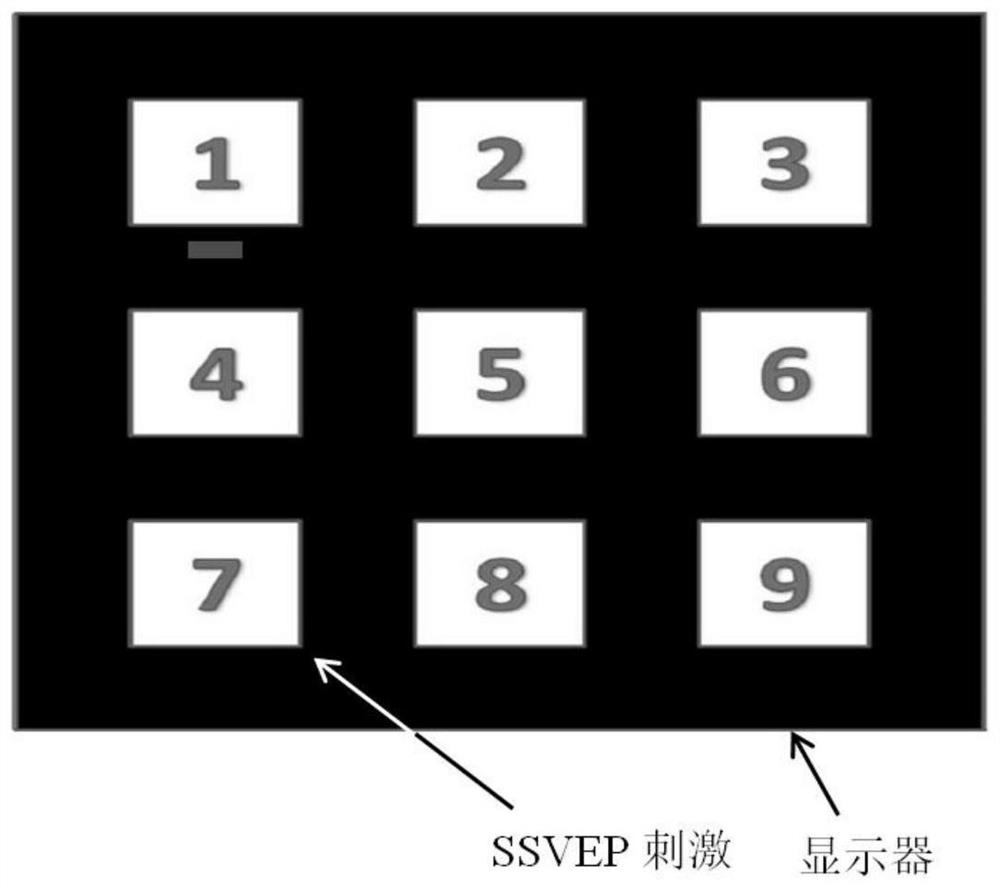Brain-computer interface system with few channels and asynchronous control based on mi and ssvep dual paradigm
A technology of asynchronous control and brain-computer interface, applied in mechanical mode conversion, computer components, input/output process of data processing, etc., can solve the problem of inability to realize asynchronous control, less-channel BCI, improved classification accuracy, and poor signal quality and other problems to achieve the effect of improving classification accuracy, effectively extracting features, and improving feature extraction and classification capabilities
- Summary
- Abstract
- Description
- Claims
- Application Information
AI Technical Summary
Problems solved by technology
Method used
Image
Examples
Embodiment Construction
[0041] The technical solution of the invention will be described in detail below in conjunction with the accompanying drawings.
[0042] figure 1 For the BCI system shown in the present invention, the system includes: a spontaneous MI instruction module that the user spontaneously generates MI signal output, an SSVEP stimulation module for stimulating the user's SSVEP signal, and is used to collect the EEG that the user responds to the two paradigms of MI and SSVEP respectively. EEG signal acquisition module, MEMD analysis module for multi-variable empirical mode decomposition analysis of EEG signals, asynchronous control module composed of switch module composed of MI paradigm and multi-choice module composed of SSVEP paradigm in series, and asynchronous control module The output is the output of the BCI system.
[0043] figure 2 is a schematic diagram of the asynchronous control of the BCI system proposed by the present invention. The BCI system consists of a switch modu...
PUM
 Login to View More
Login to View More Abstract
Description
Claims
Application Information
 Login to View More
Login to View More - R&D
- Intellectual Property
- Life Sciences
- Materials
- Tech Scout
- Unparalleled Data Quality
- Higher Quality Content
- 60% Fewer Hallucinations
Browse by: Latest US Patents, China's latest patents, Technical Efficacy Thesaurus, Application Domain, Technology Topic, Popular Technical Reports.
© 2025 PatSnap. All rights reserved.Legal|Privacy policy|Modern Slavery Act Transparency Statement|Sitemap|About US| Contact US: help@patsnap.com



